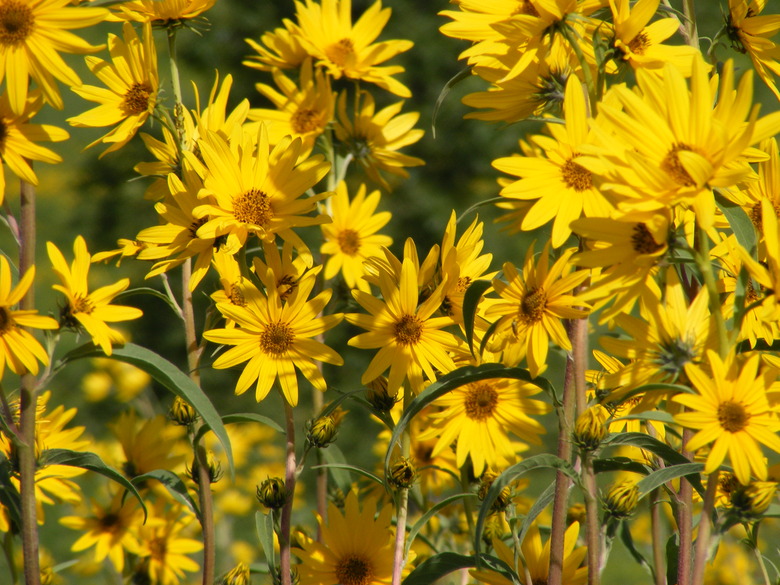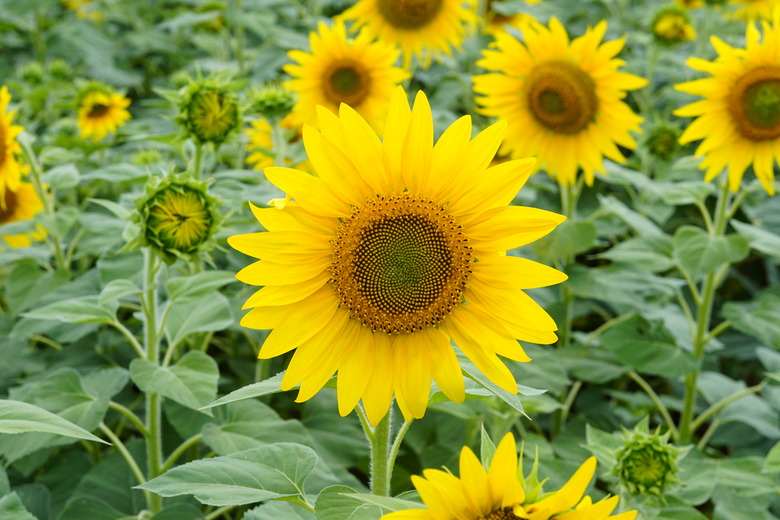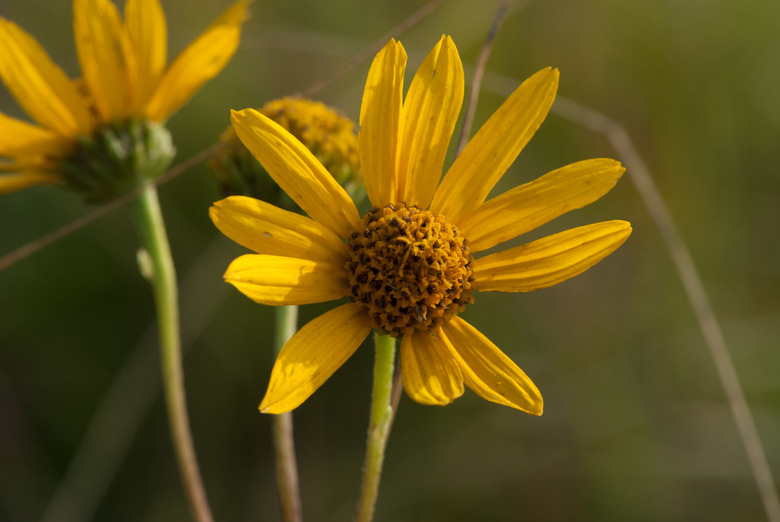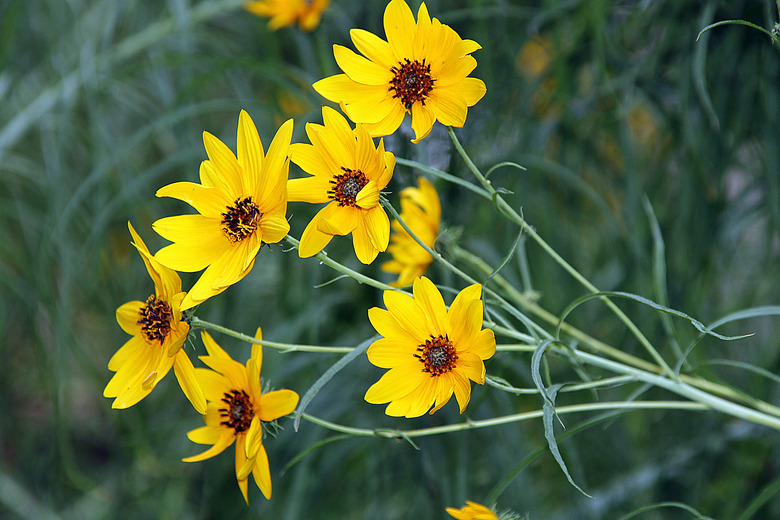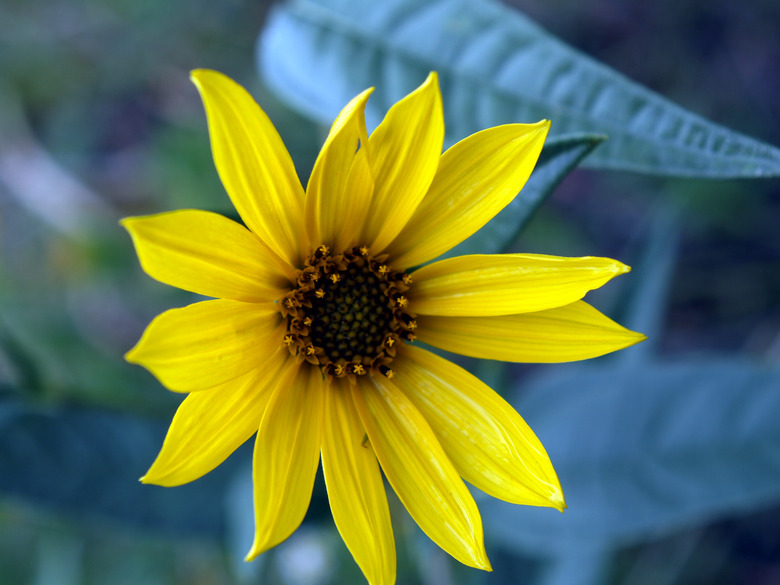How To Identify A Sunflower Plant
There are around 150 species of sunflower (Helianthus spp.), which belong to the Asteraceae, or daisy, family of plants. Most wild sunflowers are native to North America.
Prized for their showy yellow flowers, sunflowers may be annual, meaning they survive for just one growing season, or perennials that come back every year in their hardiness zones.
Features of Sunflowers
The flower heads of sunflowers are known as composite flowers because they feature individual ray flowers, which give the appearance of flower petals, around a disk made up of many tiny flowers packed closer together. The flowers on the disks become seedheads that produce seeds enjoyed by birds.
Sunflowers get their name because young sunflowers shift throughout the day to follow the sun as it moves across the sky. This movement of the sunflower heads is known as **heliotropism,** and it helps make the plants more attractive to pollinators. Therefore, whenever you plant sunflowers, you should do so in full sun.
While sunflowers are known for their height—many can be up to 10 feet tall—there is also a wide variety of sunflowers that are naturally shorter. The leaves of a sunflower are usually rough in texture.
Sunflowers get their name because young sunflower plants shift throughout the day to follow the sun as it moves across the sky.
Annual Sunflower Identification
The Helianthus species most people are familiar with is the common sunflower (Helianthus annuus), a fast-growing annual plant with heights between 5 and 10 feet. This is the species commonly cultivated commercially for sunflower seeds and as cut flowers for bouquets. Common sunflower leaves may be up to 12 inches long and have a sandpaper-like texture.
Hybridization has yielded an assortment of cultivars of the annual sunflower, including dwarf cultivars that are 1 to 3 feet tall and mammoth cultivars that may be up to 15 feet tall. The disks of the common sunflower are usually dark brown or purple, while the rays may be yellow, mahogany or even bicolored.
Perennial Sunflower Identification
Many sunflowers are perennials that begin to bloom in late summer and early fall. Here are a few examples.
Western Sunflower
Despite what its common name suggests, the western sunflower (Helianthus occidentalis, zones 4 to 8) is actually native to the central and eastern regions of the U.S. This species has orange-yellow rays arranged around a yellow disk. This is one of the shortest sunflower species, with heights between 2 and 4 feet.
The western sunflower is also known as the naked-stemmed sunflower because of the sparse number of leaves on its stems.
Willow-Leaved Sunflower
The willow-leaved sunflower (Helianthus salicifolius, zones 4 to 9) gets its name from its leaves, which are thin and droop like those of a willow tree. This species has bright yellow rays surrounding a dark brown center disk.
The willow-leaved sunflower is capable of growing more than 8 feet tall, but has typical heights between 5 and 6 feet.
Maximilian Sunflower
The Maximilian sunflower (Helianthus maximiliani, zones 4 to 9) has yellow rays that surround a darker yellow disk. The flowers are 2 or 3 inches wide and perched on hairy stems that may be up to 10 feet tall.
The leaves of the Maximilian sunflower have lengths between 3 and 6 inches and are usually narrow and folded in half lengthwise.
References
- North Carolina State Extension: Helianthus annuus
- Missouri Botanical Garden: Helianthus maximiliani
- Missouri Botanical Garden: Helianthus occidentalis
- North Carolina State Extension: Helianthus
- Missouri Botanical Garden: Helianthus annuus
- West Virginia Extension: What is Heliotropism?
- K-State Research and Extension: Sunflower
- Missouri Botanical Garden: Helianthus salicifolius
